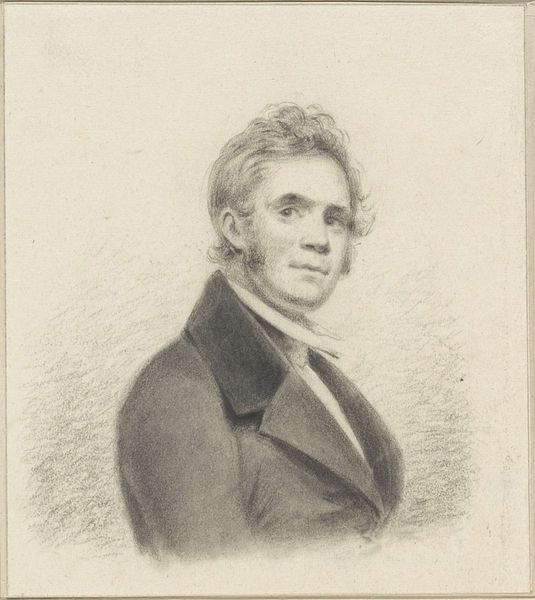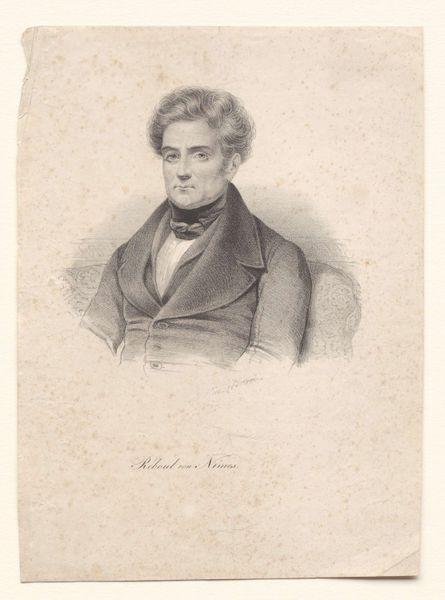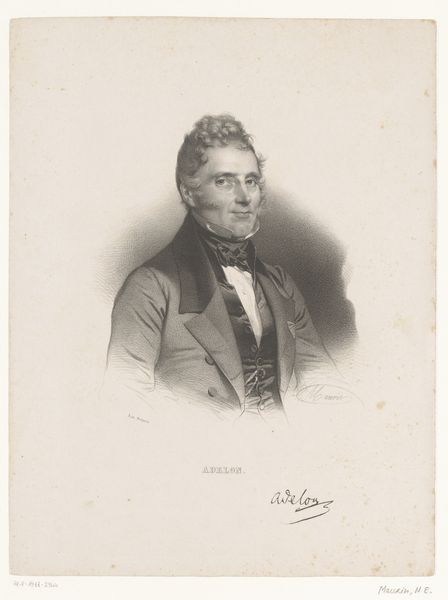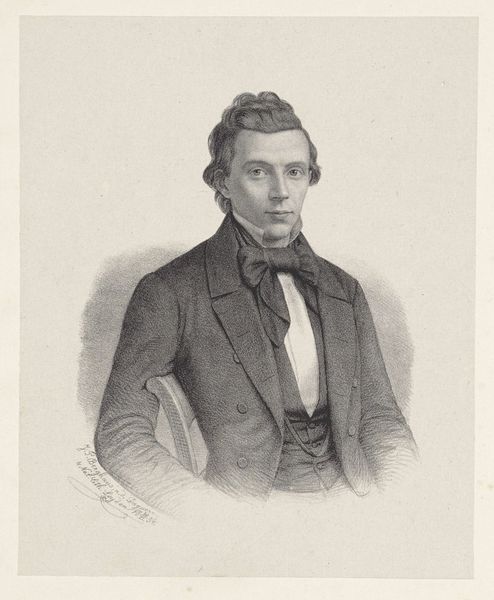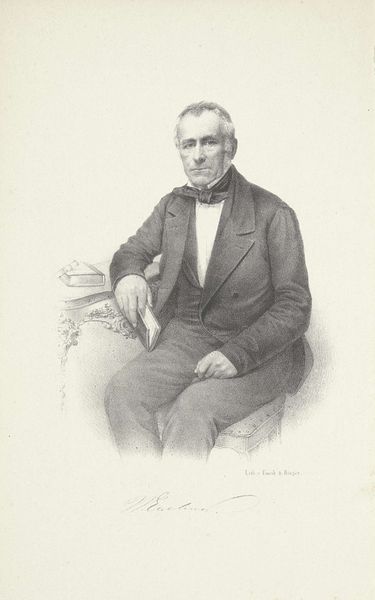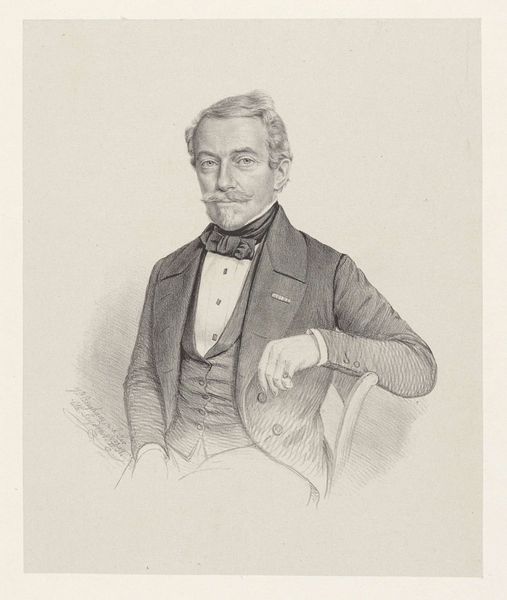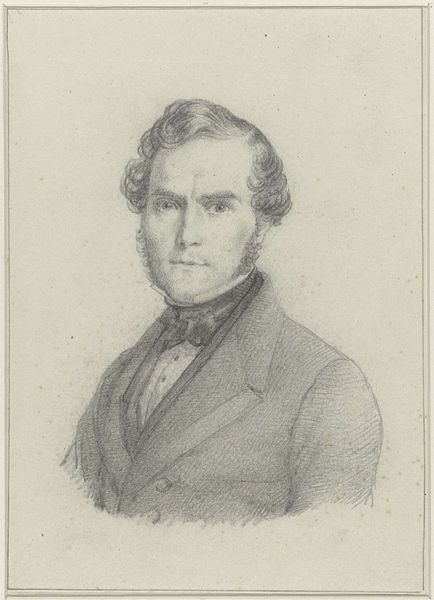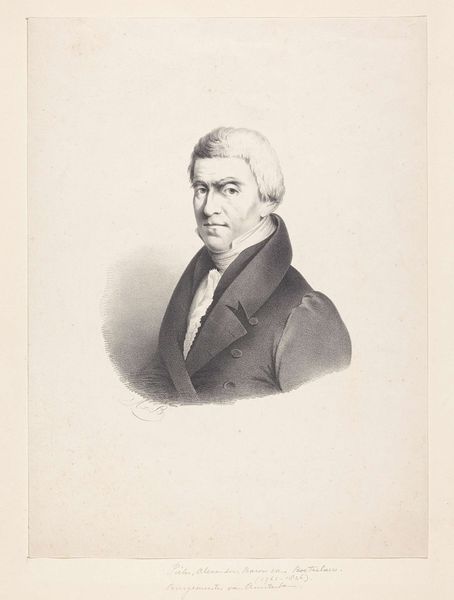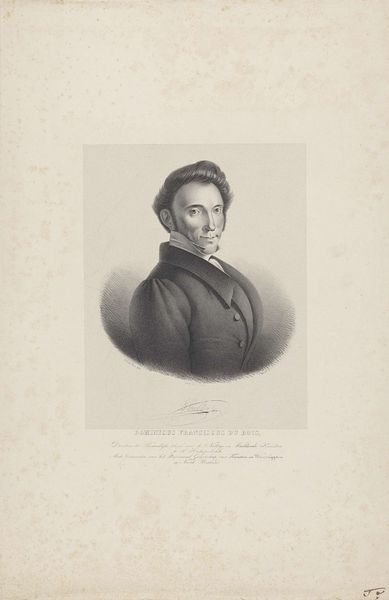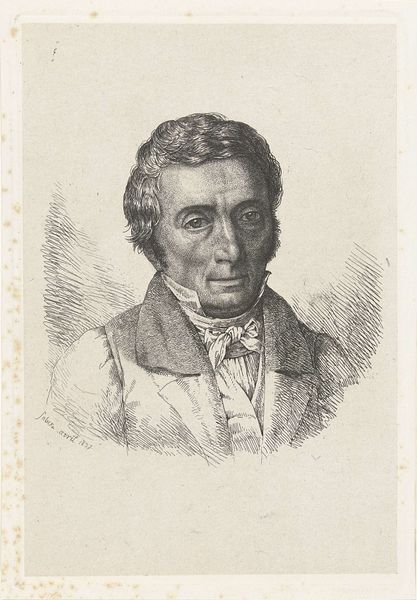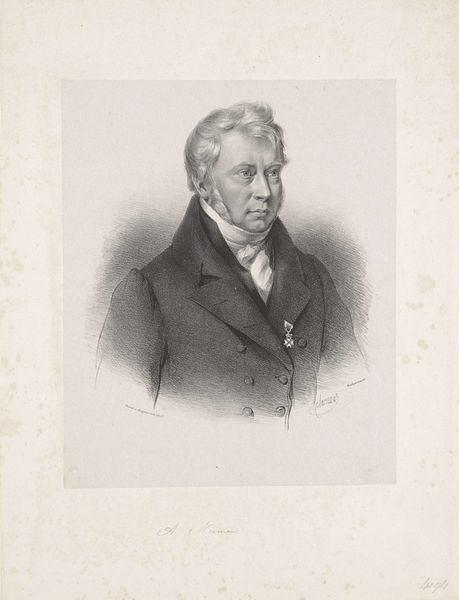
drawing, pencil, graphite
#
portrait
#
pencil drawn
#
drawing
#
charcoal drawing
#
pencil drawing
#
romanticism
#
pencil
#
graphite
#
portrait drawing
Dimensions: height 126 mm, width 101 mm
Copyright: Rijks Museum: Open Domain
Curator: Standing before us is the "Self-Portrait of Jacobus Schoemaker Doyer," dating from the period 1802 to 1867. It’s currently held in the collection of the Rijksmuseum. Crafted from pencil and graphite, it provides an intriguing glimpse into the artist's likeness. Editor: My first impression is one of gentleness. There's a soft, almost ethereal quality to the rendering, despite it being a graphite drawing. His expression seems knowing, but without a hint of harshness. Curator: That resonates. Considering the romanticism of the era, this isn't surprising. Think about the Romantic ideals: the emphasis on individual emotion and the power of personal experience. The self-portrait allows Doyer to construct and present his own identity, positioning himself within that intellectual and artistic landscape. How does he choose to show himself, and what does it communicate? Editor: I see echoes of classical portraiture, but filtered through a more introspective lens. The soft rendering is a choice to reflect Doyer's own spirit in his time. The dark jacket gives the solid and secure feeling and is juxtaposed with the light coming from behind his neck. Is the whiteness of his neck alluding to some other ideal from that period? The almost absent background reminds me that, like Narcissus, Doyer is in love with the idea of himself. Curator: Indeed, there's a constructed element to all portraiture, and self-portraits even more so. As we view Doyer, what can this image communicate beyond his lifetime? This gaze and countenance present a constructed and stylized symbol for artists. Does that rendering then carry implicit assumptions or biases related to race, gender, and class? After all, not everyone in his society could produce a likeness of themselves so masterfully, let alone have it displayed in such a public setting. Editor: I suppose my immediate, subjective response to this image does reflect my contemporary perspective. It carries his truth but might carry untruths about other individuals who didn't have the ability to carry out this practice during that period. In the future I would hope that we contextualize such personal achievements with considerations for what achievements did not take place. Curator: Exactly. Let's continue thinking critically about the messages conveyed in this beautiful but multifaceted work and make space to create room for more perspectives.
Comments
No comments
Be the first to comment and join the conversation on the ultimate creative platform.
